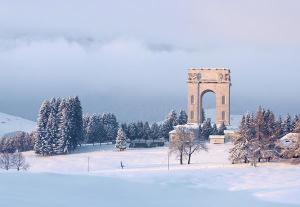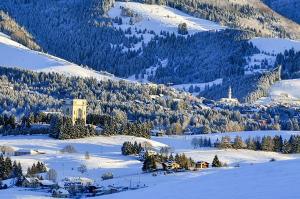
off
Sacrario
“In the spring of 1932, work started on the “Ossario” or “bone” monument, it was going up on the Laiten Hills, east of town, were the bombed-out houses had been left unrepaired. The boys from town used to climb those hills to play, as their fathers did before them (…)
It was a summer day when the engineers and surveyors went up the hills and scorted by the podestà and the fascist party secretary. With their range finders, their tape measures, their teodolithes the technicians got to work surveying, measuring scribbling. And so, after numerous proposals, offers, conferences, tests, and on-the-spot investigations, the Roman authorities decided that a great monument was to be built and that this great monument holding the remains of our heroes who’d died on the Altopiano (for the country’s salvation) would go right here, on our hills of play. To make room for the imperial-style arc, all the quiet cemeteries in the meadows and woods were leveled”.
From “Giacomo’s seasons,” translated by Elizabeth Harris, Autumn Hill Books, 2012.
The place
The War Memorial of Asiago, the most visible monument of the Plateau, is one of the ossuaries of the First World War: it houses the remains of over 54 thousand Italian and Austro-Hungarian dead soldiers, originally buried in 36 war cemeteries. It is composed of a square crypt of 80 metres on a side, surmounted by a square arc of 23 metres, 47 metres high. Places and names of the main theatres of hostilities are reported in the parapet of the terrace. Designed by Orfeo Rossato, it was inaugurated by King Vittorio Emanuele III in 1938.
Inside there is a museum of the conflict, which soon will have virtual installations and networking along with the other shrines of the war. The ossuary is also the starting point of the Via Tilman, which retraces the route taken by Major Harold William Tilman, responsible of the Agordino area for the Allies during the Resistance, to reach his command post after being parachuted on the Asiago Plateau (at Granezza) in May 1944.
Free visits all days except Mondays.



